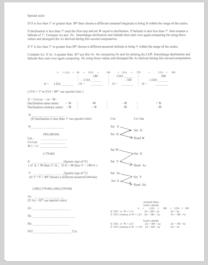
NavList:
A Community Devoted to the Preservation and Practice of Celestial Navigation and Other Methods of Traditional Wayfinding
Bygrave revised rules for converting azimuth angle to Zn
From: Gary LaPook
Date: 2010 Jul 11, 20:55 -0700
From: Gary LaPook
Date: 2010 Jul 11, 20:55 -0700
At the Navigation Weekend in Mystic, Bob Bernecky discovered a problem with the rules I had used for converting the azimuth angle to azimuth (Zn) for plotting the LOP. My rules had worked for all the cases I had tested but Bob found a case where my rules didn't work and that I had not tested. So I went back to work. (We will just use the northern hemisphere for this explanation to make this easier.) We realize that in most situations there is no ambiguity as to which quarter the Zn lies since you know the approximate direction you are looking when you take the sight, The problem arises when the azimuth angle is limited to the range of zero to 90 degrees and the Zn is near 90 degrees or 270 degrees in which case the correct Zn might fall either side of the line so there is an ambiguity in converting from azimuth angle to Zn. One easy rule to apply first is that if the declination is greater than the latitude then the azimuth can never be in the southerly semicircle. This rule handles the case Bob found since the declination was 56 N and the latitude was 41 N. To generalize this rule, if the declination has the same name as the latitude and the declination is greater than the latitude, then you start with the direction of the elevated pole (the nearer pole) when converting from azimuth angle to azimuth (Zn.) The second rule to apply is that if the declination is south then the Zn can never be in the northern semicircle. To generalize this rule, if the declination and the latitude have contrary names then you start with the direction of the depressed pole (the further pole) when converting from azimuth angle to Zn. These two rules take care of most of the cases, especially for navigators in low latitudes. The remaining ambiguity concerns situations in which the declination is the same name as the latitude but is less than the latitude. In this situation the azimuth of the body will be both north and south of the east - west line during part of each day. The original rules I posted work to resolve these cases but I decided to modify them to make it easier to combine with the two new rules explained above. My original rules have you comparing "X" with 90 degrees. The new rules compare "W" with latitude which accomplishes the same thing. So, the new rules are: If the declination or if "W" is greater than the latitude then combine the azimuth angle with the azimuth to the elevated pole. If the declination name is contrary to the name of the latitude or if "W" is less than the latitude then combine azimuth angle with the azimuth to the depressed pole. The new rules look like this: Azimuth Rules North Latitude 0 < LHA < 180 < LHA < 360 If DEC or W > LAT Zn = 360 - Az Zn = Az If DEC contrary or W < LAT Zn = 180 + Az Zn = 180 - Az South Latitude If DEC or W > LAT Zn = 180 + Az Zn = 180 - Az If DEC contrary or W < LAT Zn = 360 - Az Zn = Az I have attached a revised form. gl







